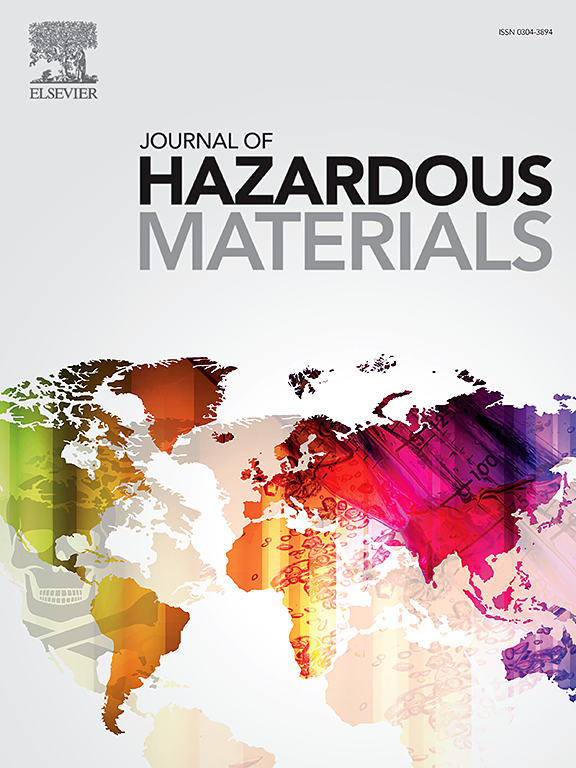Oxidative Damage Induced by Daily Exposure to Primary and Emerging Aromatic Amines: Insights from Large Scale Biomonitoring and Cell-based High-Throughput PCR Array Analysis
IF 12.2
1区 环境科学与生态学
Q1 ENGINEERING, ENVIRONMENTAL
引用次数: 0
Abstract
Aromatic amines are a group of compounds with industrial and environmental significance. The oxidative damage induced by large scale residential exposure to aromatic amines remains poorly characterized, necessitating comprehensive biomonitoring and mechanistic investigations. Herein, this study integrates large scale biomonitoring and cell-based high-throughput PCR array analysis to evaluate the oxidative damage induced by daily exposure to primary aromatic amines (PAAs), emerging aromatic amines (AAs), and their quinone derivatives (PPD-Qs) in the Chinese population. Urinary concentrations of 11 PAAs, 20 AAs, and 6 PPD-Qs were quantified (ΣPAAs > ΣAAs > ΣPPD-Qs) in 397 samples across 31 provinces/municipalities in China, uncovering significant regional variations. Advanced statistical regression analyses (multiple linear regression, weighted quantile sum (WQS) regression, and Bayesian kernel machine regression (BKMR)) identified key chemical contributors, correlating with oxidative stress biomarkers (8-oxo-7,8-dihydro-2′-deoxyguanosine (8-OHdG), 8-hydroxyguanosine (8-OHG), dityrosine (di-Y), and malondialdehyde (MDA)), indicative of DNA, RNA, protein, and lipid damage. The WQS model identified several key chemicals driving oxidative stress, including 1,3-Diphenylguanidine (DPG), 1,2,3-Triphenylguanidine(TPG), 1,3-Di-o-tolyguanidine(DTG), 4-Phenylaminodiphenylamine quinone (DPPD-Q), 4-(Cyclohexyl amino) diphenylamine quinone (CPPD-Q), and 2-naphthylamine (2-NA). In vitro experiments demonstrated that these prioritized chemicals elevated reactive oxygen species production by 118%–241% and dysregulated 11 oxidative stress-related genes, implicating pathways linked to superoxide metabolism and ferroptosis. This multi-faceted approach advances the understanding of aromatic amine-induced oxidative damage, offering critical insights to support chemical prioritization and regulatory measures to mitigate associated health risks.

每日暴露于初级和新兴芳香胺引起的氧化损伤:来自大规模生物监测和基于细胞的高通量PCR阵列分析的见解
芳香胺是一类具有工业和环境意义的化合物。大量居住环境暴露于芳香胺引起的氧化损伤的特征尚不明确,需要进行全面的生物监测和机制研究。本研究结合大规模生物监测和基于细胞的高通量PCR阵列分析,评估了中国人群每日暴露于原芳香胺(PAAs)、新兴芳香胺(AAs)及其醌衍生物(PPD-Qs)所引起的氧化损伤。测定尿中11种PAAs、20种AAs和6种PPD-Qs的浓度(ΣPAAs >;ΣAAs祝辞ΣPPD-Qs)在中国31个省/直辖市的397个样本中发现了显著的区域差异。先进的统计回归分析(多元线性回归、加权分位数和(WQS)回归和贝叶斯核机回归(BKMR))确定了与氧化应激生物标志物(8-氧-7,8-二氢-2 ' -脱氧鸟苷(8-OHdG)、8-羟基鸟苷(8-OHG)、二酪氨酸(di-Y)和丙二醛(MDA))相关的关键化学因素,表明DNA、RNA、蛋白质和脂质损伤。WQS模型确定了几种驱动氧化应激的关键化学物质,包括1,3-二苯基胍(DPG)、1,2,3-三苯基胍(TPG)、1,3-二-邻多胍(DTG)、4-苯基氨基二苯胺醌(DPPD-Q)、4-(环己基氨基)二苯胺醌(CPPD-Q)和2-萘胺(2- na)。体外实验表明,这些优先化学物质使活性氧的产生提高了118%-241%,并失调了11个氧化应激相关基因,涉及与超氧化物代谢和铁死亡相关的途径。这种多方面的方法促进了对芳香胺诱导的氧化损伤的理解,为支持化学优先级和减轻相关健康风险的监管措施提供了关键见解。
本文章由计算机程序翻译,如有差异,请以英文原文为准。
求助全文
约1分钟内获得全文
求助全文
来源期刊

Journal of Hazardous Materials
工程技术-工程:环境
CiteScore
25.40
自引率
5.90%
发文量
3059
审稿时长
58 days
期刊介绍:
The Journal of Hazardous Materials serves as a global platform for promoting cutting-edge research in the field of Environmental Science and Engineering. Our publication features a wide range of articles, including full-length research papers, review articles, and perspectives, with the aim of enhancing our understanding of the dangers and risks associated with various materials concerning public health and the environment. It is important to note that the term "environmental contaminants" refers specifically to substances that pose hazardous effects through contamination, while excluding those that do not have such impacts on the environment or human health. Moreover, we emphasize the distinction between wastes and hazardous materials in order to provide further clarity on the scope of the journal. We have a keen interest in exploring specific compounds and microbial agents that have adverse effects on the environment.
 求助内容:
求助内容: 应助结果提醒方式:
应助结果提醒方式:


